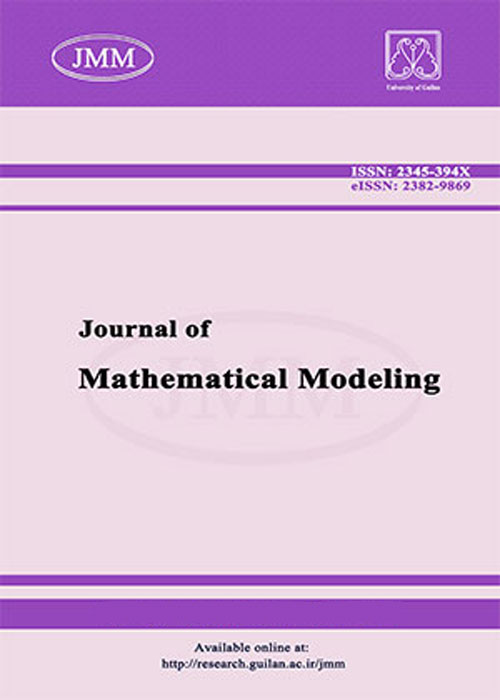فهرست مطالب

Journal of Mathematical Modeling
Volume:4 Issue: 1, Summer 2016
- تاریخ انتشار: 1395/02/20
- تعداد عناوین: 6
-
Pages 1-18In this paper, a high-order and conditionally stable stochastic difference scheme is proposed for the numerical solution of Ito^ stochastic advection diffusion equation with one dimensional white noise process. We applied a finite difference approximation of fourth-order for discretizing space spatial derivative of this equation. The main properties of deterministic difference schemes, i.e. consistency, stability and convergence, are developed for the stochastic case. It is shown through analysis that the proposed scheme has these properties. Numerical results are given to demonstrate the computational efficiency of the stochastic scheme.Keywords: stochastic partial differential equations, consistency, Stability, convergence
-
Pages 19-34It is well known that the matrix exponential function has practical applications in engineering and applied sciences. In this paper, we present some new explicit identities to the exponential functions of a special class of matrices that are known as central-symmetric X-form. For instance, eAt, tA and aAt will be evaluated by the new formulas in this particular structure. Moreover, upper bounds for the explicit relations will be given via subordinate matrix norms. Eventually, some numerical illustrations and applications are also adapted.Keywords: central, symmetric matrix, matrix function, matrix exponential, Gamma, Beta matrix functions
-
Pages 35-58In this paper, we deal to obtain some new complexity results for solving semidefinite optimization (SDO) problem by interior-point methods (IPMs). We define a new proximity function for the SDO by a new kernel function. Furthermore we formulate an algorithm for a primal dual interior-point method (IPM) for the SDO by using the proximity function and give its complexity analysis, and then we show that the worst-case iteration bound for our IPM is O(6(m)3m(m)Ψm(m)01θlognμ0ε), where m>4.Keywords: quadratic programming, convex nonlinear programming, interior point methods
-
Pages 59-78This paper presents a mathematical model for the vibration analysis of a three-component piezoelectric force sensor. The cubic theory of weakly nonlinear electroelasticity is applied to the model for describing the electromechanical coupling effect in the piezoelectric sensing elements which operate in thickness-shear and thickness-stretch vibration modes. Hamilton's principle is used to derive motion and charge equations for the vibration analysis. The model can predict the performance of the force sensor for use in proposed cutting force measurement.Keywords: piezoelectric, force sensor, nonlinear vibration analysis, weakly nonlinear electroelasticity
-
Pages 79-102In this paper, we have proposed a numerical method for singularly perturbed fourth order ordinary differential equations of convection-diffusion type. The numerical method combines boundary value technique, asymptotic expansion approximation, shooting method and finite difference method. In order to get a numerical solution for the derivative of the solution, the given interval is divided into two subintervals called inner region (boundary layer region) and outer region. The shooting method is applied to inner region whereas for the outer region, standard finite difference method is applied. Necessary error estimates are derived. Computational efficiency and accuracy are verified through numerical examples.Keywords: singularly perturbed problems, fourth order ordinary differential equations, boundary value technique, asymptotic expansion approximation, shooting method, finite difference scheme, parallel computation
-
Pages 103-115The predator-prey model with stage structure for predator is generalized in the context of ecoepidemiology, where the prey population is infected by a microparasite and the predator completely avoids consuming the infected prey. The intraspecific competition of infected prey is considered. All the equilibria are characterized and the existence of a Hopf bifurcation at the coexistence equilibrium is shown. Numerical simulations are carried out to illustrate the obtained results.Keywords: prey, predator model, stage structure, Stability, Hopf bifurcation

